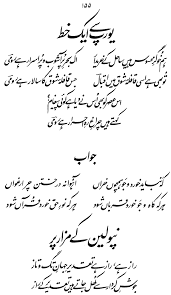Introduction.
Distributed in 1935, this wonderful assortment exhibits Iqbal's significant philosophical reflections, profound bits of knowledge, and a visionary investigation of the intricacies of the human spirit. As we unfurl the pages of "Bal-e-Jibril," we leave on an idyllic excursion that rises above reality, digging into the profundities of the human soul.

**Primary Elegance:**
"Bal-e-Jibril" is a graceful wonder organized into three sections: "Gabriel's Wing," "Gabriel's Wing's Flight," and "Gabriel's Wing's Reaction." Each part is a beautiful journey that investigates different subjects, from otherworldliness and self-acknowledgment to the complexities of human connections and cultural elements. Iqbal's utilization of Gabriel's Wing as a figurative vehicle permits him to take off through the domains of the seen and concealed, winding around an embroidery of stanzas that test, edify, and move.
**Gabriel's Wing: Disentangling Otherworldly Realities:**
The initial segment of "Bal-e-Jibril" opens with a strong summon to the lead celestial host Gabriel, representing the guardian angel's wing that conveys the writer higher than ever of understanding. Iqbal investigates topics of heavenly disclosure, the idea of God, and the otherworldly arousing of the person. The verse is rich with emblematic symbolism and representations that welcome perusers to mull over the significant secrets of presence.

One of the focal subjects in this segment is Iqbal's investigation of "Khudi" (selfhood), an idea that reverberations through quite a bit of his work. Through the refrains of "Gabriel's Wing," Iqbal provokes people to rise above their constraints, perceive their innate worth, and embrace their heavenly potential. The Wing of Gabriel turns into a figurative vessel for the writer's excursion into the otherworldly domain, encouraging perusers to look for a more profound comprehension of their motivation and association with the heavenly.
**Gabriel's Wing's Flight: A Philosophical Sojourn:**
In the second piece of "Bal-e-Jibril," named "Gabriel's Wing's Flight," Iqbal takes off into the domains of reasoning, tending to the complexities of human life, the difficulties of advancement, and the developing elements of the East and West. The verse in this part is a philosophical stay that explores through the intricacies of information, reason, and the mission for truth.
Iqbal's refrains mirror a profound commitment with Western way of thinking, especially crafted by Nietzsche, Bergson, and Spinoza. He studies the materialistic perspective, supporting for an amicable combination of otherworldliness and reason. The Wing of Gabriel turns into a vessel for navigating the scholarly scenes, testing winning philosophies, and requiring a blend of Eastern otherworldly insight with Western scholarly progressions.
The writer's investigation of the pressure among independence and cooperation is especially impactful. Through the illustration of Gabriel's Wing, Iqbal urges people to transcend the limited bounds of inner self and ancestral affiliations, stressing the significance of a shared mindset that rises above lines and encourages solidarity.
**Gabriel's Wing's Reaction: Profound Concordance Unveiled:**
The last piece of "Bal-e-Jibril," named "Gabriel's Wing's Reaction," brings the wonderful excursion round trip. Here, Iqbal divulges the zenith of profound bits of knowledge acquired through the figurative trip of Gabriel's Wing. The sections dig into the complicated connection between the singular soul and the heavenly, investigating topics of affection, dedication, and the extraordinary force of profound arousing.
The idea of "Ishq" (divine love) becomes the overwhelming focus in this part, as Iqbal illustrates the spirit's excursion towards its definitive association with the heavenly. The Wing of Gabriel, having navigated the domains of keenness and reasoning, presently drops into the domain of the heart, where the artist investigates the extraordinary and cleansing nature of heavenly love.
Iqbal's stanzas in this segment are implanted with a feeling of profound bliss, commending the heavenly presence that saturates each part of presence. The writer requires an acquiescence of the self to the heavenly will, underscoring the extraordinary force of affection in refining the spirit and driving it towards profound edification.
**Philosophical Thoughts and Representative Imagery:**
"Bal-e-Jibril" is a demonstration of Iqbal's dominance in mixing philosophical thoughts with rich representative symbolism. The illustration of Gabriel's Wing fills in as a flexible image, addressing the excursion of the spirit, the journey for information, and the extraordinary force of heavenly love. Iqbal's commitment with different philosophical customs adds profundity to his sections, making an idyllic embroidery that welcomes perusers to consider the significant inquiries of presence.
The assortment additionally mirrors Iqbal's profound association with Islamic mystery and Sufi customs. The allegorical trip of Gabriel's Wing lines up with the mysterious excursion of the spirit, repeating subjects tracked down in Sufi verse and reasoning. The utilization of imagery and purposeful anecdote adds layers of importance to the refrains, welcoming perusers to investigate the profound aspects implanted in Iqbal's verse.
**Inheritance and Contemporary Relevance:**
"Bal-e-Jibril" remains as a demonstration of Allama Iqbal's scholarly and philosophical inheritance. Its effect stretches out past the domain of Urdu writing, affecting masterminds, artists, and researchers across the globe. The assortment stays a wellspring of motivation for those looking to unwind the intricacies of human life, investigate the profundities of otherworldliness, and draw in with the unique transaction of mind and heavenly insight.
In contemporary times, the subjects investigated in "Bal-e-Jibril" keep on resounding. As people wrestle with inquiries of character, otherworldliness, and the quest for significance in a quickly impacting world, Iqbal's sections give an immortal aide. The similitude of Gabriel's Wing fills in as an encouragement to set out on an excursion of self-revelation, scholarly investigation, and profound arousing.
All in all,
"Bal-e-Jibril" remains as a wonderful demonstration of the brightness of Allama Iqbal. Through the allegorical trip of Gabriel's Wing, Iqbal welcomes perusers to take off into the domains of reasoning, otherworldliness, and self-revelation. The assortment's getting through heritage lies in its capacity to rise above fleeting and social limits, welcoming people to think about the significant secrets of presence and embrace the groundbreaking force of the heavenly.



You must be logged in to post a comment.